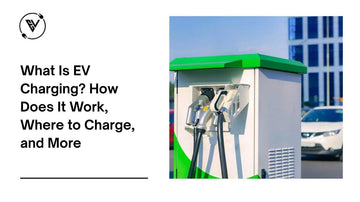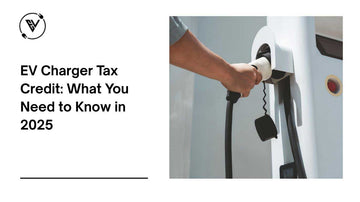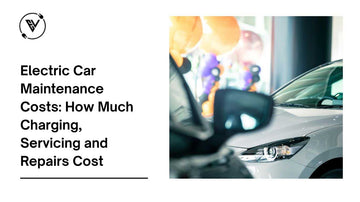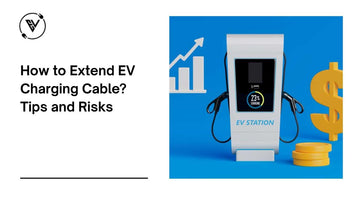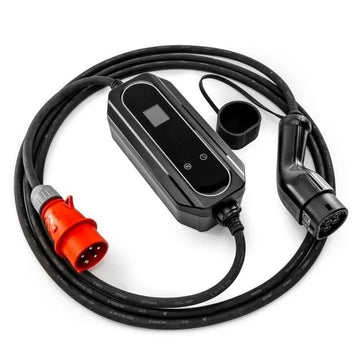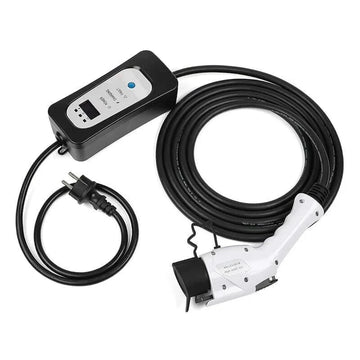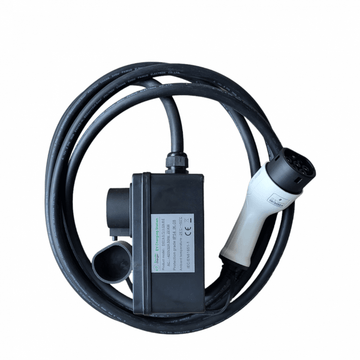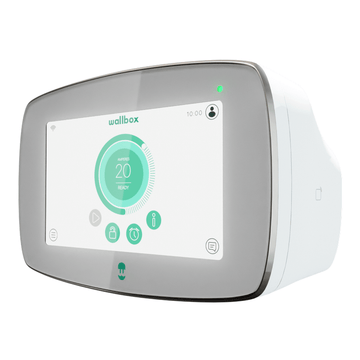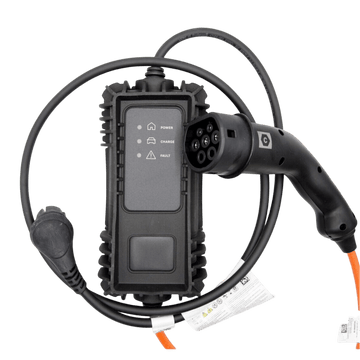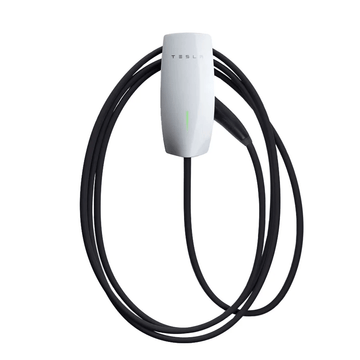EV charging is the process of transferring electrical energy to an electric vehicle’s battery so it can operate. Unlike gasoline or diesel powered vehicles that use internal combustion engines, electric vehicles (EVs) run on stored electricity.
Charging is done through a device called an EV charger which draws power from the grid or renewable sources and sends it through a cable into the car’s battery. This can be done at home, in public charging stations or at service stations. As more people go electric, EV charging has become a part of the modern transportation system.
What is EV charging?
EV charging means plugging an electric vehicle into a power source. You plug a charging cable into your car’s port and let the electricity flow into the battery. It can take 30 minutes to more than 24 hours depending on the charger, the battery and how much energy you need. EV charging is necessary to keep electric vehicles ready to use and to move away from fossil fuels.

How Do Electric Car Chargers Work?
Electric car chargers work by converting energy from the grid into electricity that can be stored in a vehicle’s battery. Most electric vehicle chargers use alternating current (AC) which is the standard electricity from household outlets. The car’s onboard charger then converts AC into direct current (DC) to store in the battery. DC fast charging skips this step and sends electricity directly to the battery making it much faster.
What is an EV Charger?
An EV charger is a device that manages the flow of electricity to an EV’s battery. It includes safety systems, a control unit, and a cable with a connector that plugs into the car. There are several types of chargers that come in many forms, including EV wall chargers, 22kW home chargers, and more.

Where Can I Charge My EV?
There are many locations where electric vehicle owners can charge an EV. Charging is no longer limited to just home setups. Today, EV drivers can choose from many public and private charging solutions.
Home Charging station
Home is the most convenient place to charge an electric car. Most EV drivers plug in overnight using either a regular plug (Level 1) or a Level 2 wall charger. 22kW home chargers offer very fast charging at home for vehicles that support high charging capacity. Learn how to install an EV charger at home and also check the EV charger installation cost if you're setting one up.
Public Charging
Public charging is in parking garages, shopping centers and city streets. Level 2 or DC fast charging and payment through app, card or RFID. For EV owners without off street parking or home chargers.
Work Charging
Many employers offer charging stations for employees. Good for daytime top ups and promoting sustainability in the workplace.
Service Stations
Modern service stations have rapid chargers that can fill up an electric car in under an hour. Good for long distance travel and extending an electric car’s range.
Mobile Charging
In some cities mobile charging vans can deliver energy to your car wherever it is parked. While rare, mobile EV charging is growing and useful in emergencies or breakdowns.
Setup Your Home Charging Solution
Setting up home charging involves choosing a charger that matches your vehicle’s needs and your home’s electrical setup. For daily charging, a Level 2 charger offers the best balance of speed and cost. You can explore a wide variety of EV home chargers and charging cables, depending on your connector type.
Common cable types include type 1 charging cables, type 2 charging cable, and Tesla charging cables. If your car and charger use different connectors, you can use a type 1 to type 2 adapter.
What Are the Different Charging Levels, Types and Connectors?
EV charging has different levels and types depending on power output and connector.
- Level 1: Basic charging with a standard plug. 6-10 km per hour.
- Level 2: Requires 240V charger installation. 25-80 km per hour.
- DC Fast Charging: Found in public charging stations. Up to 300 km in 30 minutes.
Connectors also vary:
- Type 1: Older standard, mainly for US and some Asian models.
- Type 2: Current European standard. Most new cars and charging stations use this.
- CCS (Combined Charging System): Can do AC and DC charging.
- CHAdeMO: Older Nissan and Mitsubishi EVs.
- Tesla: North America uses its own connector, Europe uses Type 2.
Explore all type 1 to type 2 charging cables for compatibility.

How Long Does It Take to Charge an Electric Car?
Charging time depends on several factors:
- Battery capacity: Bigger batteries take longer to charge.
- Charging level: Level 1 is slow, Level 2 is faster, and DC charging is fastest.
- Charging power: The higher the charger’s power output, the faster the charge.
- Car’s battery state: Charging slows down after 80% to protect battery health.
Examples:
- Level 1: 24–36 hours for full charge
- Level 2: 4–10 hours
- DC Fast Charging: 20–40 minutes to 80%
Battery Capacity and Charging Capacity
Battery capacity (or charging capacity) refers to the total amount of energy an electric vehicle's battery can store, usually measured in kilowatt-hours (kWh). It’s one of the most important factors affecting electric car range, charging time, and overall performance. A higher battery capacity allows a car to travel farther on a single charge, but it also means longer charging times if you're using a standard household outlet or lower-power charger.
How Do I Authenticate or Pay to Charge?
Most public EV charging stations require authentication. This can be done by:
- Using a mobile app connected to a charging network
- Swiping a contactless debit or credit card
- Tapping an RFID card linked to your account
The process usually starts by plugging in the charging cable, tapping your card or starting the session via app, and then unplugging once the session ends.
What is an RFID Card for EV Charging?
An RFID card is a small plastic card that uses radio-frequency identification to start a charging session. EV owners get these from their charge point operators and can use them to tap and activate charging stations. This method is quick and works even if your phone has no signal.

How Much Does It Cost to Charge an Electric Car?
Charging costs vary depending on electricity prices, location, and charging method.
- Home charging: $0.10–$0.20 per kWh (0.09–0.18€)
- Public Level 2 charging: $0.20–$0.40 per kWh (0.18–0.35€)
- DC fast charging: $0.30–$0.60 per kWh (0.28–0.55€)
To fully charge a 60 kWh battery:
- At home: $6–$12 (5.50–11€)
- At a public DC station: $18–$36 (16.50–33€)
Charging during off-peak hours or with solar panels can reduce costs.
What Affects Charging Speed?
Many things can impact how quickly you can charge an EV:
- Battery capacity and age
- Charging station power output
- Vehicle’s onboard charger limits
- Cable quality and connection type
- Battery temperature (cold slows it down)
- Existing battery level (charging slows above 80%)
What Is Smart Charging and How Does It Work?
Smart charging uses internet-connected systems to control how and when your vehicle charges. It allows EV owners to schedule charging when electricity is cheapest or greenest. It can also adjust charging speed based on power grid demand, helping to avoid overloads and reduce strain on infrastructure.
What Is Load Management or Balancing?
Load management (or load balancing) is a system that shares electrical power between multiple EV chargers or devices. It ensures that the combined power draw doesn’t exceed limits of the local grid or building. This is especially useful in apartment complexes or businesses with many EVs charging at once.
How Do I Charge at Home vs in Public?
At home:
- Park the car near your charger.
- Plug in the cable from your home charger.
- The car begins charging automatically or after scheduled delay.
- Monitor progress through app if available.
- Unplug when finished.
In public:
- Find a charging station using a map or app.
- Plug in the charging cable or use the built-in cable.
- Authenticate with an RFID card or app.
- Monitor or wait for session to finish.
- End session, unplug, and move your car.
Electric Vehicles vs Fuel
Electric vehicles are different from fuel-powered cars in how they make energy for motion. Here’s a more detailed breakdown:
Power Source
- Electric Vehicles (EVs): Powered by electricity stored in lithium-ion batteries.
- Fuel-Powered Cars: Run on gasoline or diesel in an internal combustion engine.
Emissions
- EVs: Zero tailpipe emissions, so cleaner and better for the planet.
- Fuel Cars: Emit carbon dioxide and other pollutants.
Engine and Components
- EVs: Electric motors and fewer moving parts, so less wear and tear.
- Fuel Cars: Complex engines with many moving parts, more maintenance.
Refueling and Charging
- EVs: Recharge using the electric vehicle charging infrastructure, home, public and DC fast charging stations.
- Fuel Cars: Refuel at gas stations, usually takes a few minutes.
Convenience
- EVs: Can be charged at home with a home charger, perfect for overnight charging.
- Fuel Cars: Must be driven to a gas station for every fill up; home fueling isn’t possible.
Refueling Speed
- EVs: Charging from 30 minutes (with rapid charging) to several hours.
- Fuel Cars: Refueling 5-10 minutes.
Both electric vehicles and public electric vehicle chargers are getting smarter and more widespread, making EV charging easier than ever. With better charging infrastructure, fast charging options and increasing electric car range, EV ownership is the new norm. Whether you’re charging overnight, at work or on a road trip, there’s always a solution to keep your battery full.


